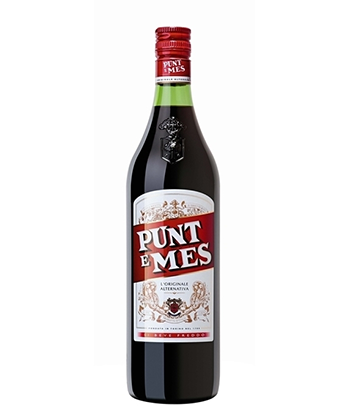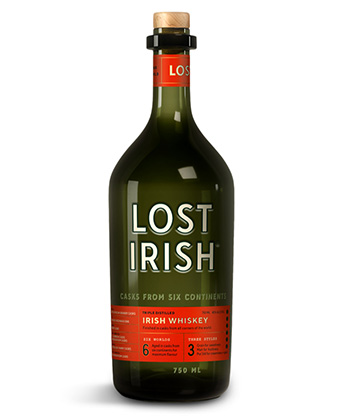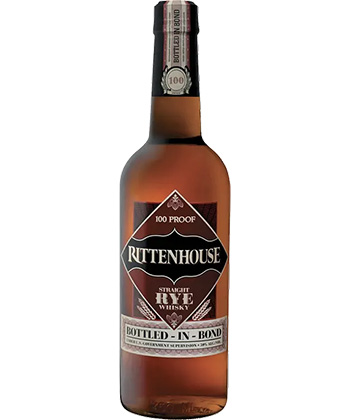There are a few clues that can indicate whether a bar is worth sitting down at or it’s best to move on. Is the bar top clean, or is it littered with trash? Is the staff engaged with guests, or are the customers being ignored? Do they know how to pour a proper pint of Guinness? But sometimes, all it takes is seeing a specific bottle sitting on a shelf to let you know if a place is legit. It doesn’t matter if this bottle is in the well or if it’s a bit dusty and tucked in the corner of the top shelf — it’s there, and it sets off a IYKYK-type signal that says the bartenders behind the stick know what’s up.
The bottle that triggers this green flag varies from person to person. Ask a bartender, and they’ll have a pretty solid reason why they think it stands out. So, we asked 10 pros what bottles signify legitimacy when they visit a new bar for the first time. This is what they had to say.
The biggest green-flag bottles, according to bartenders:
- Amaro Nonino
- Rhum agricole
- Local spirits
- Refrigerated vermouth
- Punt e Mes
- Strega
- Benedictine
- Lost Irish Triple Distilled Irish Whiskey
- Hochstadter’s Slow & Low Rock and Rye Old Fashioned
- Green Chartreuse
- Rittenhouse Rye
- Dirty Sue Premium Olive Juice
- Tequila Ocho
- Fortaleza Tequila
- Fernet-Branca
- Amaro Montenegro
- Suze
- Pathfinder
- Any non-alcoholic spirit

“My green-flag bottles behind the bar would definitely be Amaro Nonino, rhum agricole, and local or semi-local products. Also, [I respect] any bar that puts vermouth in the fridge. The vermouths are not exactly green-flag bottles on their own, but their treatment makes them act as one.” —Erin McGrath, bartender, Doar Bros., Charleston, S.C.

“If I saw Punt e Mes, Strega, or Benedictine on a back bar, I would have full confidence that I am in good hands at this bar.”—Travis Shook, beverage manager, Bacaro, St. Peters, Mo.

“A major green flag from an Irish whiskey perspective is Lost Irish. It’s a blended Irish whiskey containing the three core styles of Irish whiskey [production], and uses casks from six continents. It’s a green flag because it’s been created and promoted by a young team of amazing Irish people who put relationships before budgets, and it represents a new era of contemporary, progressive products in the category. If a bar has this, they care about who they support within Irish whiskey. And it helps that it’s a banging, versatile dram.” —Mark McLaughlin, director of Irish whiskey, The Dead Rabbit, Austin, Texas

“My kind of bar is more about the vibe the staff creates rather than fancy drinks. So, when I’m off the clock, I just want to relax with a decent cocktail and I want it in a reasonable amount of time. Slow & Low Rock and Rye stands out as a trusted green light because it is [craft cocktail-quality] in a bottle. People can turn up their noses at bottled cocktails all they want, but if I look at the back bar and see a bottle of Slow & Low Rock & Rye Old-Fashioned, or even see those tiny cans in the cooler, I can be 99.9 percent certain I’m going to have a good time — and to me, that’s the most important thing.” —Michael Reyes, general manager, Reunion Kitchen + Drink, Corona, Calif.

“Maybe a bit literal, but I personally feel that green Chartreuse is a green flag. This is a difficult find these days, but if a bar has it, I can sip my Last Word in comfort. If the [bar] team has put effort into finding this liqueur, that means they must put the same effort into making their drinks.” —David Moylan, general manager, The Irish Exit, NYC

“For me, green flags don’t usually get raised by any single bottle sitting on the back bar. I look at their rail. I want to know what their well spirits are. Our well spirits are the most conscious choice we make as bar operators and bartenders; it’s during that decision-making process that we decide where the line is drawn for our bar’s quality standard. That said, I’m going with Rittenhouse Rye. It’s strong and bold enough for cocktails, but it’s also a great companion as a shot with an ice-cold, lowbrow beer. Aside from it’s quality, it has a pretty appealing price tag, too!” —Charles Friedrichs, beverage director, The Jones Assembly, Oklahoma City, Okla.

“Little bit of a curveball here, but anytime I see Dirty Sue Premium Olive Juice behind a bar, I know the place is legit for a few reasons. First, it gives me a pretty good idea that they value quality in every ingredient that goes into their cocktails, from the spirit and ice to the mixers and, in all likelihood, the garnishes. Second, it tells me it’s a ‘bartender’s bar.’ Dirty Sue was created by a bartender, so it’s a bit of a IYKYK kind of thing. Finally, Dirty Martinis are my go-to, and I don’t need yucky fingers in the olive tray and, ostensibly, in my drink.” —Claire Mallett, beverage director, Catch One, Los Angeles

“Any time I peek at the back bar and see Tequila Ocho, Fortaleza, Fernet-Branca, and Amaro Montenegro, I know I’m in a good place. None of them are super esoteric, but if a place has them, I have a little more faith in the bar’s management and the bar’s clientele.” —Michael Neff, bar director, Distillery Bar at Brooklyn Gin, Brooklyn

“My green flag whenever I enter a bar is seeing a well-used — not dusty — bottle of Suze. It sustainably focuses on French terroir by incorporating both wild and cultivated gentian root. They do so with care and attention so they don’t over-harvest, which helps preserve the longevity of the apertif and the legacy of wild gentian. That is an ethos I can get behind. Beyond that, any bartender who can incorporate Suze into a cocktail with balance is my kind of barkeep.” —Carlos Kennedy-Lopez, lead bartender, Lolita, NYC

“My green-flag bottle for a bar is Pathfinder! Seeing this delicious bottle of non-alcoholic amaro on a back bar tells me right off the bat that this bar team cares about having inclusive options for all consumers. It also tells me they have great taste, because Pathfinder is absolutely delicious. Honestly, seeing any non-alcoholic spirits on a back bar is a big green flag for me, and the more of them, the stronger that green flag waves!” —Alex Jump, founder of Focus on Health
